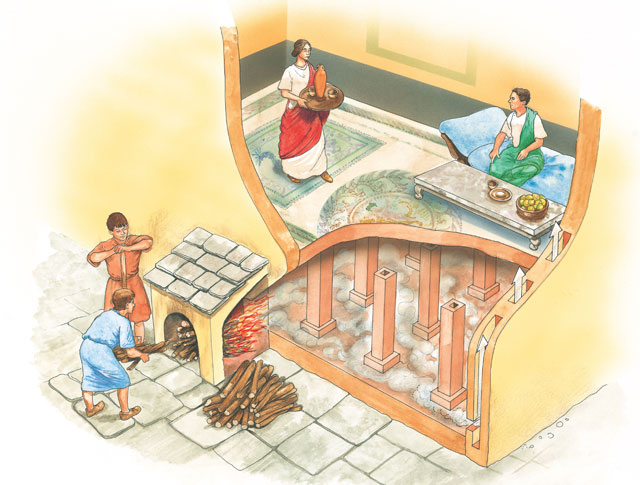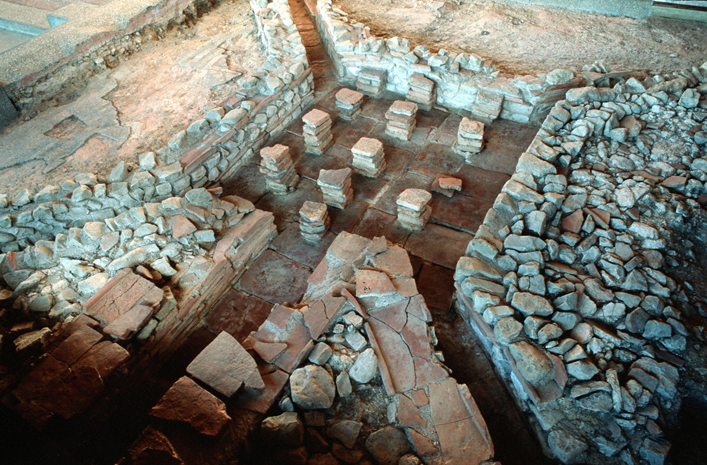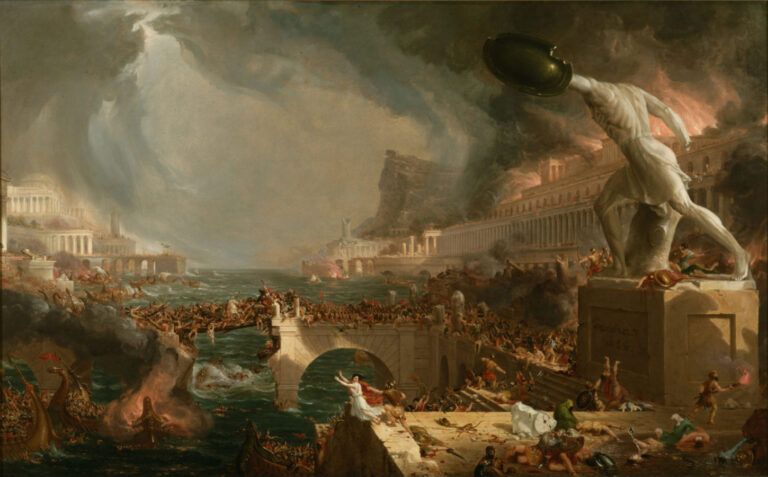When you imagine life in ancient Rome, you probably picture togas, chariots, and marble columns—not central heating. But believe it or not, the Romans had one of the most sophisticated indoor heating systems in the ancient world. It was called the hypocaust, and it worked so well that elements of the design inspired modern-day radiant floor heating.
Let’s dive into how this ancient technology worked, how widespread it became, and why it stands as another stunning example of Roman ingenuity.
What Is a Hypocaust?
The word hypocaust comes from the Greek hypo- (under) and kaiein (to burn). In short, a hypocaust was an underfloor heating system that circulated hot air beneath the floors and sometimes even through the walls of Roman buildings.
This wasn’t just for elite palaces—hypocausts were common in bathhouses, villas, and even some military installations. The Romans believed in the importance of bathing and comfort, and they weren’t shy about using advanced engineering to make it happen.

How Did It Work?
The hypocaust system was both clever and effective. Here’s a breakdown of its components:
Suspended Floors (Suspensurae):
Floors were raised off the ground using short stone or brick pillars called pilae. This created a crawlspace beneath the room.Furnace (Praefurnium):
A furnace was built on the outside of the building, usually fueled with wood. The fire would heat the air, which was then funneled into the underfloor space.Flues and Vents:
The hot air circulated beneath the floors, warming them up. Flues (hollow clay pipes) built into the walls carried the hot air and smoke upward, distributing warmth through the building and eventually venting through the roof.Flooring:
On top of the raised pillars, a thick layer of concrete or tiles was laid, which would absorb and radiate heat into the room above. Floors were often finished with beautiful mosaics that would stay toasty during cold months.
Where Was the Hypocaust Used?
While we associate this technology with luxury, the hypocaust wasn’t exclusive to the ultra-rich. Here’s where you’d commonly find it:
Public bathhouses (thermae): These were among the largest and most complex hypocaust systems. Romans loved their hot baths—caldaria, tepidaria, and laconicum rooms were all heated this way.
Private villas: Wealthy citizens often had private bathhouses or heated living quarters.
Military outposts: Even remote forts on the Roman frontier (like in Britain and Germany) had hypocaust systems to keep soldiers warm.
One famous example is the Baths of Caracalla in Rome—an enormous public bath complex with a vast hypocaust system. But you can also find remains of hypocausts in places as far-flung as Hadrian’s Wall in Britain or Timgad in Algeria.

Why Was It So Impressive?
Thermal Efficiency: While not as efficient as modern systems, the hypocaust provided consistent and comfortable warmth. Floors, especially in bathhouses, could reach pleasantly warm temperatures.
Engineering Precision: Designing a hypocaust required careful planning. The air had to flow smoothly, the floors had to be strong enough to support traffic, and the temperature had to be regulated to avoid overheating rooms or damaging mosaics.
Health Benefits: Romans believed warmth was essential for health, especially in public baths. Heated environments were seen as therapeutic, aiding circulation and relaxation—kind of like an ancient spa day.
Why Did It Disappear?
Like many advanced Roman technologies, the hypocaust system declined with the fall of the Western Roman Empire in the 5th century. As central authority collapsed and large-scale urban life diminished, so too did the infrastructure and resources needed to maintain such systems.
In many areas, people reverted to simpler fireplaces or braziers for heat. It wasn’t until centuries later that similar underfloor heating techniques reemerged in Europe.

Legacy and Modern Influence
Today, modern radiant floor heating works on similar principles: warm air or water circulates beneath flooring to gently heat a room from below. Engineers studying ancient hypocausts have marveled at the Romans’ use of passive heating—a system requiring no electricity or motors, just clever use of convection and thermal mass.
In short: the hypocaust was an eco-friendly, silent, and effective solution that still impresses modern architects and historians alike.
Conclusion: A Toasty Testament to Roman Genius
From concrete that heals itself to heating systems that rival modern tech, the Romans were far ahead of their time. The hypocaust wasn’t just a convenience—it was a symbol of how deeply the Romans valued comfort, hygiene, and engineering excellence.
So the next time you feel your heated bathroom floor and sigh with satisfaction, take a moment to thank the Romans. They walked on warm mosaics long before we ever dreamed of thermostats.
